It covers almost 70 percent of the Earth’s surface, but only five percent of our world’s oceans have been explored.
Now, scientists exploring the waters off the coast of Chile have discovered a massive underwater mountain that is home to a variety of strange and wonderful creatures.
From deep-sea corals to lobsters, experts at the Schmidt Ocean Institute believe more than 100 new species could be lurking there.
“We far exceeded our hopes on this expedition,” said Dr. Javier Sellanes, who led the expedition.
“You always hope to find new species in these remote and underexplored areas, but the amount we found, especially for some groups like sponges, is mind-blowing.”
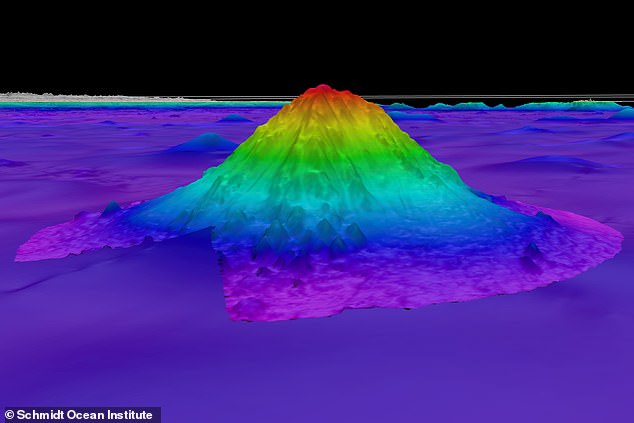
It covers almost 70 percent of the Earth’s surface, but only five percent of our world’s oceans have been explored. Now, scientists exploring the waters off the coast of Chile have discovered a massive underwater mountain that is home to a variety of strange and wonderful creatures.
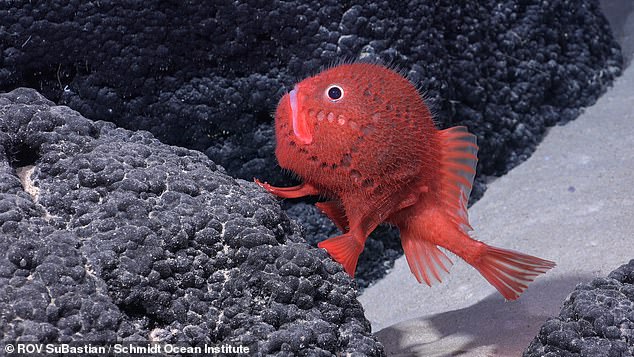

From deep-sea corals to lobsters, experts at the Schmidt Ocean Institute believe more than 100 new species could be lurking there. In the photo: a Chaunax
The team stumbled upon the new mountain while exploring Salas and Gomez Ridge.
This 1,800-mile-long underwater mountain range comprises more than 200 seamounts. that extend from the coast of Chile to Easter Island.
Using an underwater robot, scientists were able to descend to a depth of 4,500 meters.
There, they mapped a total of 20,377 square miles (52,777 square kilometers) of the seafloor.
This resulted in the discovery of four new seamounts, each with its own distinctive ecosystem.
The tallest of these seamounts, which the team unofficially named Solito, is 3,530 meters high.


The team stumbled upon the new mountain while exploring Salas and Gomez Ridge. In the photo: a spiral coral
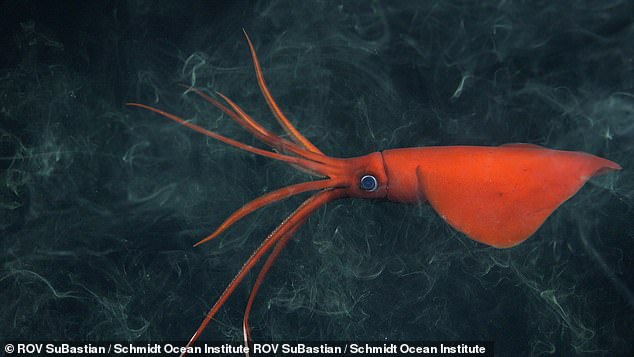

Using an underwater robot, scientists were able to descend to a depth of 4,500 meters. Pictured: a rarely seen whiplash squid
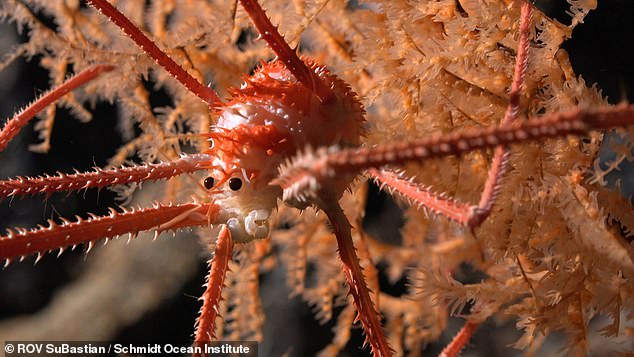

The team mapped a total of 20,377 square miles (52,777 square kilometers) of the seafloor. In the photo: a plump lobster
For perspective, it’s more than four times taller than the world’s tallest building, Dubai’s Burj Khalifa!
While the new creatures have not yet been formally named and identified, they were caught on the underwater robot’s camera.
A bright red fish known as Chaunax was spotted at a depth of 1,388 metres, while Oblong Dermechinus urchins were documented at 516 metres.
A curious plump lobster was seen perched on coral at a depth of 669 metres, while stunning photographs show a rarely seen whip squid at 1,105 metres.
Other new creatures discovered during the dive include a net-shaped sponge, a spiral coral and a spiky hedgehog.
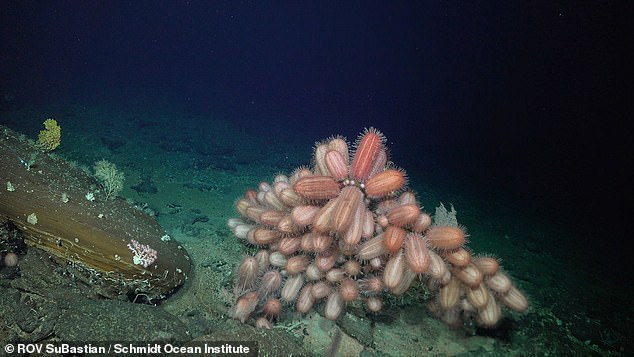

A bright red fish known as Chaunax was seen at a depth of 1,388 metres, while Oblong Dermechinus urchins (pictured) were documented at 516 metres.
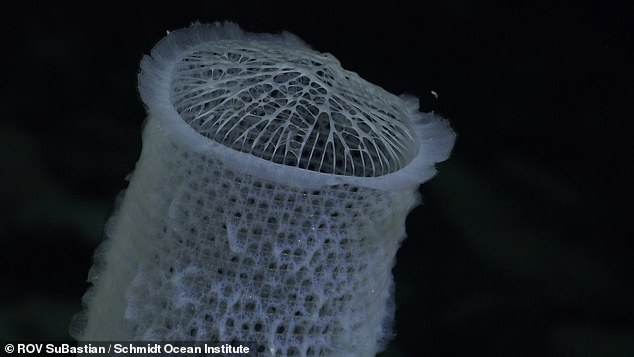

Other new creatures discovered during the dive include a net-like sponge (pictured), a spiral coral and a spiky hedgehog.
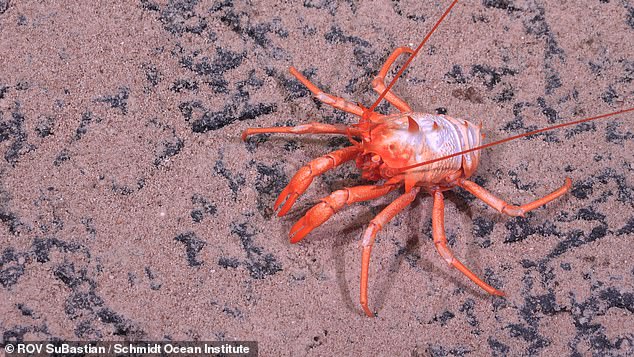

“Complete species identification can take many years,” said Dr. Jyotika Virmani, executive director of the Schmidt Ocean Institute. In the photo: a chubby lobster
“Complete species identification can take many years,” said Dr. Jyotika Virmani, executive director of the Schmidt Ocean Institute.
“Dr. Sellanas and his team have an incredible number of samples from this incredibly beautiful and little-known biodiversity hotspot.”
“Schmidt Ocean Institute is a partner of the Nippon Foundation – Nekton Ocean Census Program, which has set a goal of finding 100,000 new marine species in the next ten years and, once identified, these new species will be part of that.”
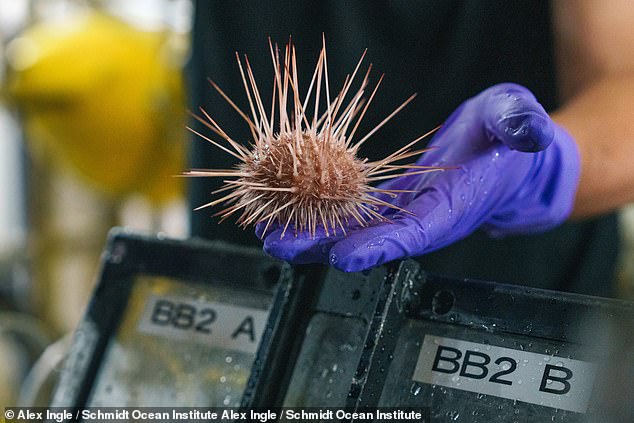

“Dr. Sellanas and his team have an incredible number of samples from this incredibly beautiful and little-known hotspot of biodiversity,” said Dr. Virmani. In the photo: an urchin
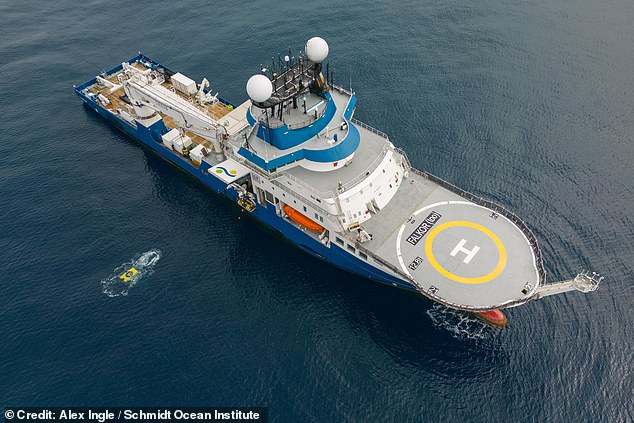

The SuBastain remotely operated vehicle (ROV) is deployed from the Falkor research vessel at the start of a scientific dive.
